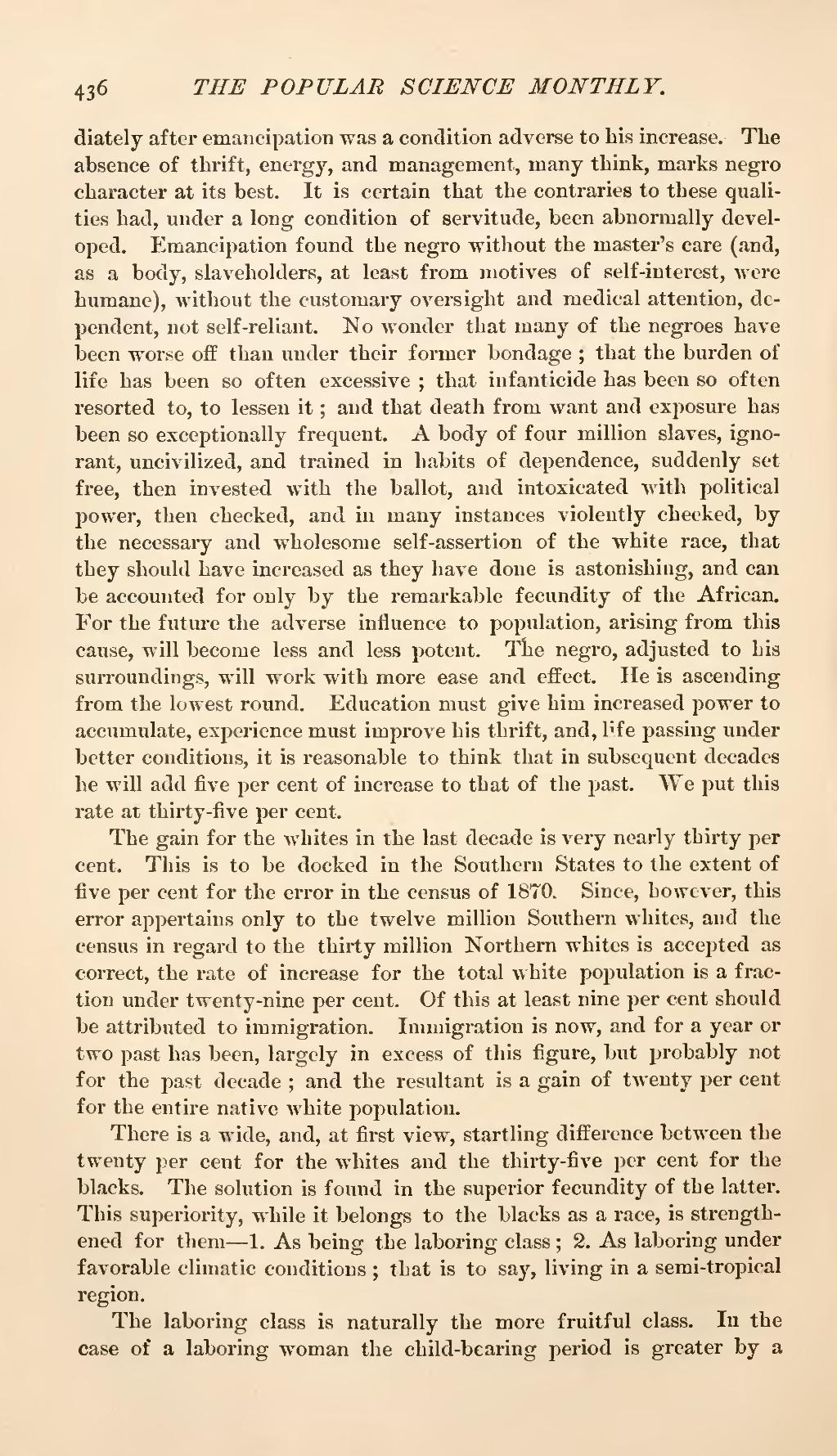diately after emancipation was a condition adverse to his increase. The absence of thrift, energy, and management, many think, marks negro character at its best. It is certain that the contraries to these qualities had, under a long condition of servitude, been abnormally developed. Emancipation found the negro without the master's care (and, as a body, slaveholders, at least from motives of self-interest, were humane), without the customary oversight and medical attention, dependent, not self-reliant. No wonder that many of the negroes have been worse off than under their former bondage; that the burden of life has been so often excessive; that infanticide has been so often resorted to, to lessen it; and that death from want and exposure has been so exceptionally frequent. A body of four million slaves, ignorant, uncivilized, and trained in habits of dependence, suddenly set free, then invested with the ballot, and intoxicated with political power, then checked, and in many instances violently checked, by the necessary and wholesome self-assertion of the white race, that they should have increased as they have done is astonishing, and can be accounted for only by the remarkable fecundity of the African. For the future the adverse influence to population, arising from this cause, will become less and less potent. The negro, adjusted to his surroundings, will work with more ease and effect. He is ascending from the lowest round. Education must give him increased power to accumulate, experience must improve his thrift, and, life passing under better conditions, it is reasonable to think that in subsequent decades he will add five per cent of increase to that of the past. We put this rate at thirty-five per cent.
The gain for the whites in the last decade is very nearly thirty per cent. This is to be docked in the Southern States to the extent of five per cent for the error in the census of 1870. Since, however, this error appertains only to the twelve million Southern whites, and the census in regard to the thirty million Northern whites is accepted as correct, the rate of increase for the total white population is a fraction under twenty-nine per cent. Of this at least nine per cent should be attributed to immigration. Immigration is now, and for a year or two past has been, largely in excess of this figure, but probably not for the past decade; and the resultant is a gain of twenty per cent for the entire native white population.
There is a wide, and, at first view, startling difference between the twenty per cent for the whites and the thirty-five per cent for the blacks. The solution is found in the superior fecundity of the latter. This superiority, while it belongs to the blacks as a race, is strengthened for them—1. As being the laboring class; 2. As laboring under favorable climatic conditions; that is to say, living in a semi-tropical region.
The laboring class is naturally the more fruitful class. In the case of a laboring woman the child-bearing period is greater by a
